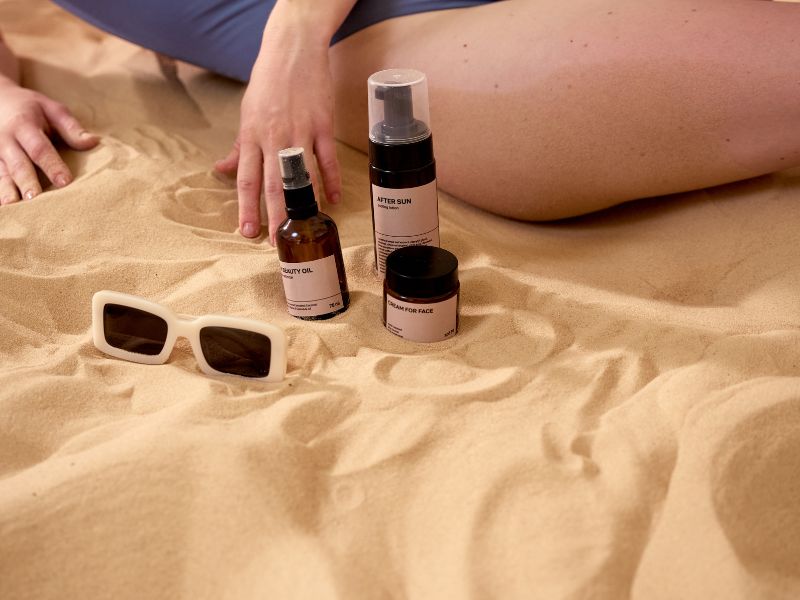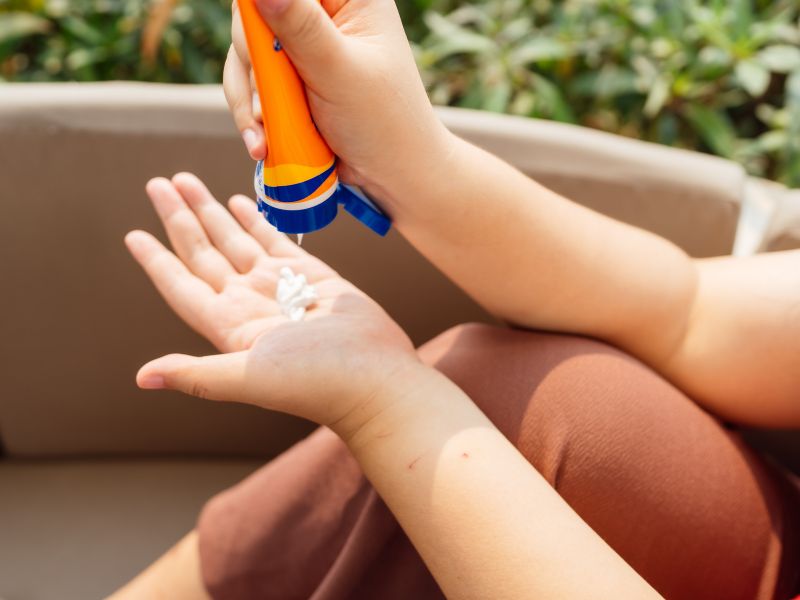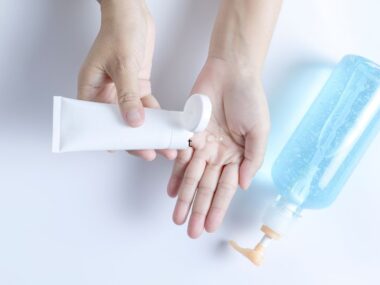Travelling with skincare essentials, especially sunscreen, is a priority for many, and as air travel has become increasingly regulated, questions about which products are allowed in checked luggage have grown. Spray sunscreen, in particular, has led to a fair amount of confusion due to both its composition and packaging. This article looks into the regulations and safety recommendations for carrying spray sunscreen in checked baggage, the potential risks involved, alternatives available, and advice for safe packing. Let’s look at what the TSA guidelines say, explore any restrictions based on chemical properties, and cover some additional best practices for ensuring you travel smoothly and safely.
Understanding TSA Guidelines for Spray Sunscreen in Checked Bags
The Transportation Security Administration (TSA) sets the standard regulations for carrying items, including liquids and aerosols, on flights. According to the TSA’s guidelines, travellers are allowed to carry aerosol products, including spray sunscreen, in their checked luggage under certain conditions:
- Quantity Restrictions: The TSA limits aerosol products in checked baggage to a total of 70 ounces (2 kg) per person, with each container not exceeding 18 ounces (500 ml). This rule applies to all personal aerosol items, such as hair spray, deodorant, and, of course, sunscreen. These regulations are designed to minimize the risk of accidental discharge and potential hazards associated with pressurized products.
- Product Labeling: Only aerosols explicitly labelled as personal care or toiletry items are permitted in checked baggage. Sunscreens are generally classified as personal care products, so you’re covered as long as your spray sunscreen falls within the allowed size limits.
- Pressurization Safety Concerns: Aerosols are typically stored under pressure, making them more susceptible to changes in altitude and temperature during air travel. The TSA’s restrictions help mitigate the risks associated with aerosol containers in checked baggage, including accidental discharge and pressurization issues.
Understanding these guidelines is critical, as failing to adhere to TSA regulations may result in items being confiscated, especially if safety concerns arise due to pressurization or improper labelling. It’s advisable to check the TSA website before travelling, as guidelines can change or be updated based on new safety standards.
Safety Concerns with Aerosol Products in Checked Luggage
Aerosol products such as spray sunscreen come with unique properties that make them potentially hazardous if not handled carefully. Here’s a look at the primary concerns associated with aerosol sprays, particularly in checked luggage:
- Pressurization and Temperature Sensitivity: Checked luggage undergoes significant temperature fluctuations and pressure changes, which can pose challenges for aerosol containers. High temperatures can lead to expansion within aerosol containers, creating a risk of leakage or, in rare cases, explosion. In response, airlines and regulatory bodies recommend limiting the volume of aerosol products carried in checked bags.
- Potential for Fire Hazards: Aerosols contain propellants that are typically flammable, including hydrocarbons like butane, propane, and isobutane. In the rare event of a fire in the aircraft’s cargo hold, flammable propellants could contribute to the fire’s spread. Some airlines have even instituted more restrictive policies on specific types of flammable aerosols for this reason. However, these situations are rare, and the TSA’s limits are in place to reduce the likelihood of such incidents.
- Risk of Accidental Discharge: The altitude and motion in flight, combined with pressurized containers, increase the risk of accidental discharge from aerosol sprays. A leak or spray could saturate luggage, damaging other items or creating a mess. To avoid this, it is wise to place aerosol containers in protective bags or wrap them in plastic before packing.
In general, the best practice is to ensure that your spray sunscreen meets TSA requirements for volume and labelling and to handle it with care. Some travellers even choose to use alternative sunscreen forms, such as lotions or creams, to avoid the pressurization and leakage risks altogether.
Airline-Specific Policies for Aerosol Sunscreen
Though the TSA sets standard regulations for what is permitted in checked baggage, some airlines enforce additional policies regarding aerosol products due to potential safety hazards. It is common for airlines to echo TSA restrictions; however, checking with your specific airline before flying is advisable, as policies can vary slightly, particularly for international travel. Some carriers might impose stricter rules about flammable aerosols, while others might limit the quantity of aerosol products based on cargo safety protocols.
International carriers are often subject to regulations from their respective civil aviation authorities, like the European Union Aviation Safety Agency (EASA) or the International Civil Aviation Organization (ICAO), which could vary slightly from TSA policies. Travellers flying internationally should consider checking both their departure and arrival countries’ regulations on aerosols to avoid any complications or surprises.
Alternatives to Spray Sunscreen for Travelers
While spray sunscreen offers the advantage of easy application, travellers may prefer alternatives when packing in checked luggage to avoid aerosol restrictions. Several types of non-aerosol sunscreens are allowed in both carry-on and checked bags with fewer limitations:
- Sunscreen Lotions and Creams: Traditional lotions are popular as they lack the pressurization and flammability issues associated with aerosols. They are not restricted to checked baggage and are generally less likely to leak or be confiscated by airport security. For carry-ons, lotions must adhere to the 3.4-ounce limit, but for checked baggage, no such limit applies.
- Stick Sunscreens: Compact and mess-free, stick sunscreens are becoming a preferred option for many travellers. They provide concentrated coverage and avoid the complications of liquid or aerosol forms, making them ideal for travel. Additionally, they are convenient for on-the-go touch-ups and can be carried in hand luggage without liquid restrictions.
- Powder Sunscreens: While relatively new to the market, powder sunscreens offer a non-liquid, non-aerosol solution for sun protection. These products are particularly popular among those with oily skin, as they provide a matte finish and avoid the potential mess of lotions or sprays. They’re TSA-friendly for both carry-on and checked bags due to their dry form.
Choosing these alternative sunscreen types can minimize risks associated with aerosol pressurization, leakage, and flammability. Although spray sunscreen is a go-to for beach trips and active days, understanding the available alternatives can help travellers make informed packing decisions.
Proper Packing Tips for Spray Sunscreen in Checked Baggage
If you decide to pack spray sunscreen in checked luggage, a few packing tips can reduce the risk of damage or leakage:
- Use a Sealable Plastic Bag: Placing aerosol containers in a resealable plastic bag can contain any leakage that might occur due to pressure changes. This precaution helps protect other belongings in the event of a discharge.
- Store in an Upright Position: When possible, pack aerosol cans in an upright position within your luggage. This orientation can help minimize the chance of accidental discharge if the nozzle is accidentally pressed or if there are fluctuations in pressure.
- Surround with Clothing for Cushioning: To reduce impact and protect the container, place the spray sunscreen in the middle of your luggage, surrounded by clothing. This can help cushion the item, reducing the likelihood of dents or damage that might lead to leaks.
- Label for Easy Identification: Marking your items can help avoid confusion and facilitate retrieval should your bag be inspected. Although TSA officers are trained to identify toiletry aerosols, a visible label can expedite the inspection process.
While spray sunscreens are convenient, they do come with specific challenges when travelling by air. With these precautions, you can significantly reduce the chances of your spray sunscreen causing issues in transit.
Sustainability Concerns and Environmental Impact of Spray Sunscreen
As travellers grow increasingly conscious of environmental impact, it’s worth noting that some spray sunscreens contain chemical ingredients, like oxybenzone and octinoxate, which have been shown to harm marine life and coral reefs. Several destinations—including Hawaii and parts of Florida—have banned sunscreens containing these chemicals to protect marine ecosystems.
When choosing a sunscreen to pack in checked luggage, consider eco-friendly options that are both safe for your skin and for the environment. Mineral-based sunscreens, containing zinc oxide or titanium dioxide, are less harmful to marine life and are increasingly available in non-aerosol formats. Mineral-based sunscreens come in cream, stick, and powder forms, making them easy to incorporate into travel plans without relying on aerosol packaging.
Conclusion
In summary, you can carry spray sunscreen in your checked baggage, provided you follow TSA guidelines regarding volume and labelling. While spray sunscreen is permitted, travellers should be mindful of potential safety risks associated with aerosols, such as pressurization and flammability. Packing tips like sealing the container in a plastic bag, storing it upright, and surrounding it with cushioning can help minimize these risks.
Alternatives such as lotion, stick, and powder sunscreens provide excellent protection without the risks associated with aerosols and can often be more convenient for travellers. Furthermore, opting for environmentally friendly formulations can help protect fragile ecosystems in travel destinations.
Understanding TSA regulations, your airline’s policies and the proper handling of aerosols can ensure you travel without the worry of leaving your sunscreen behind. By planning and taking the necessary precautions, you can prioritize both safety and convenience while keeping your skin protected on every adventure.






